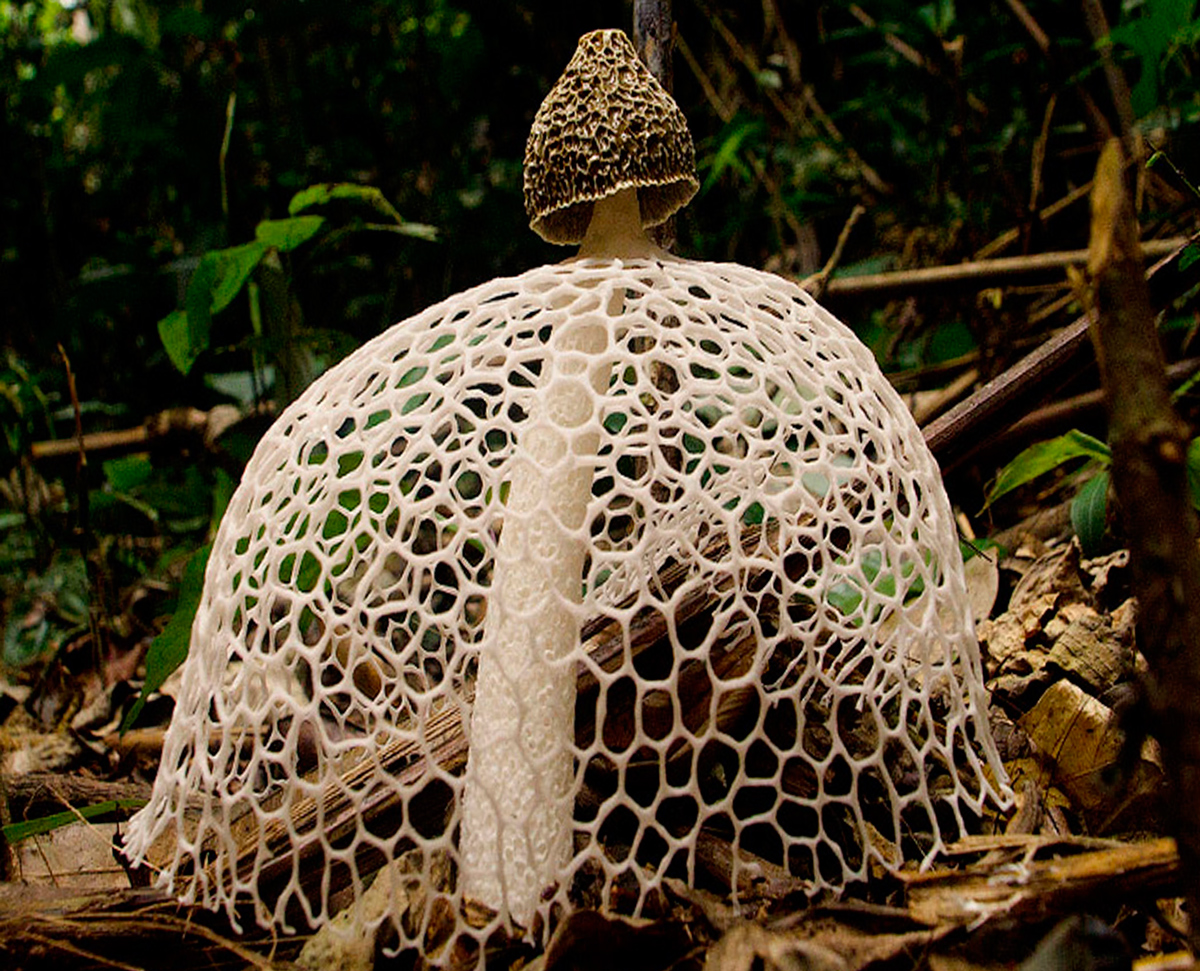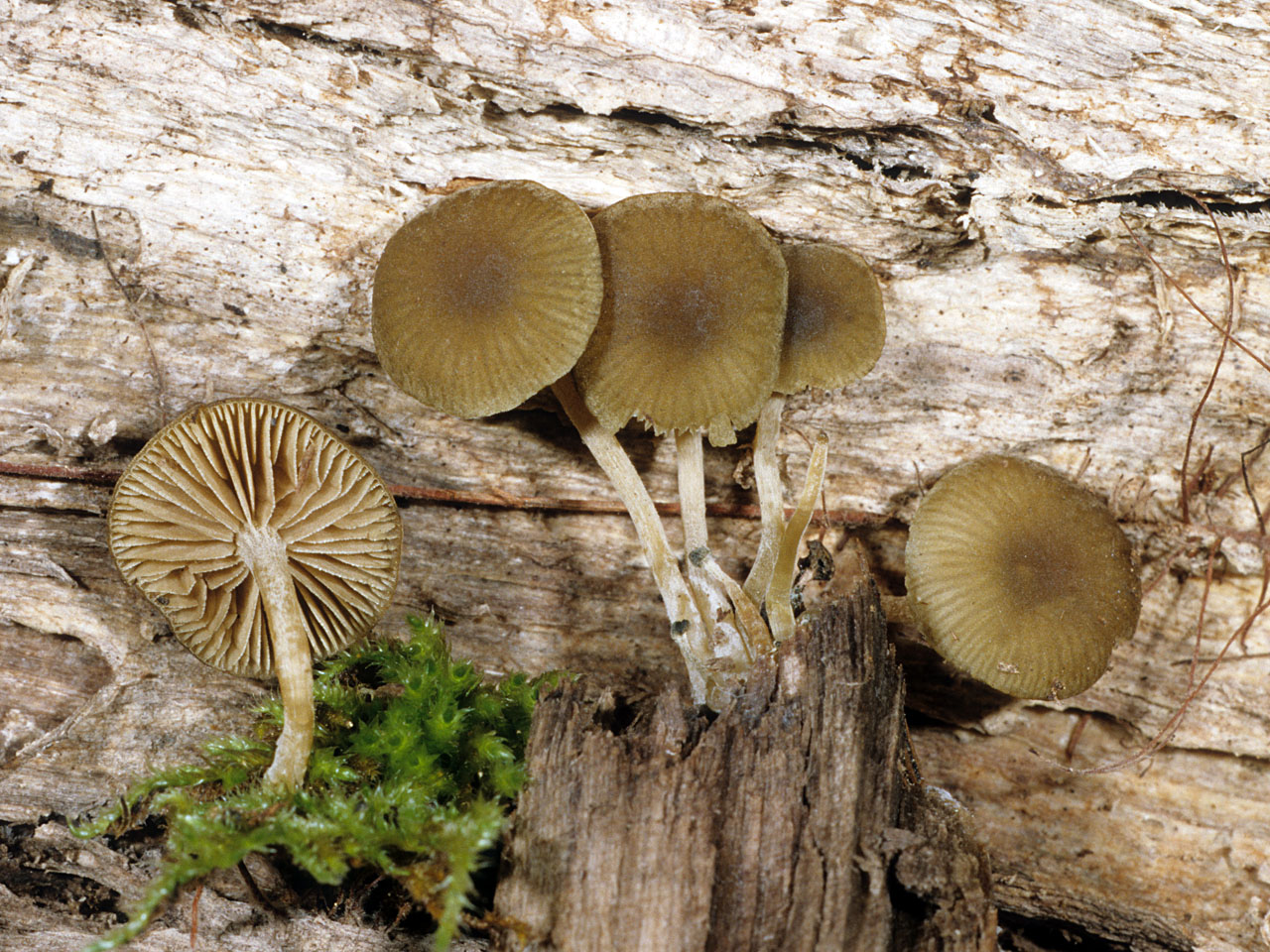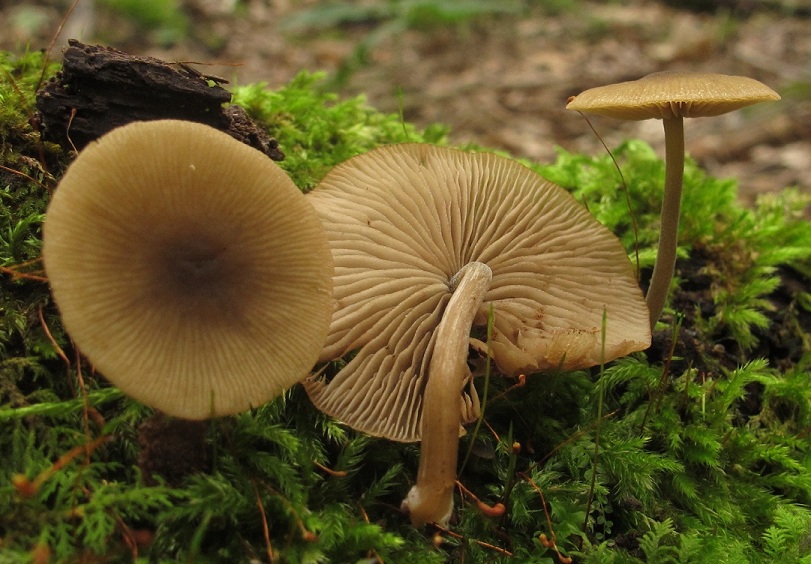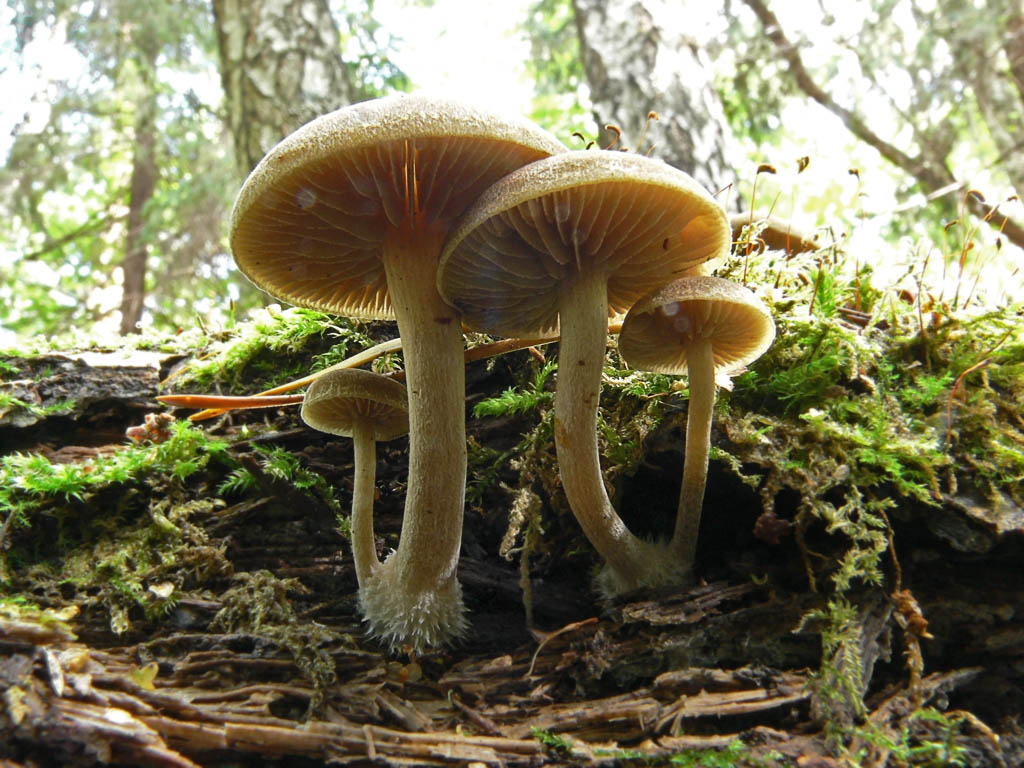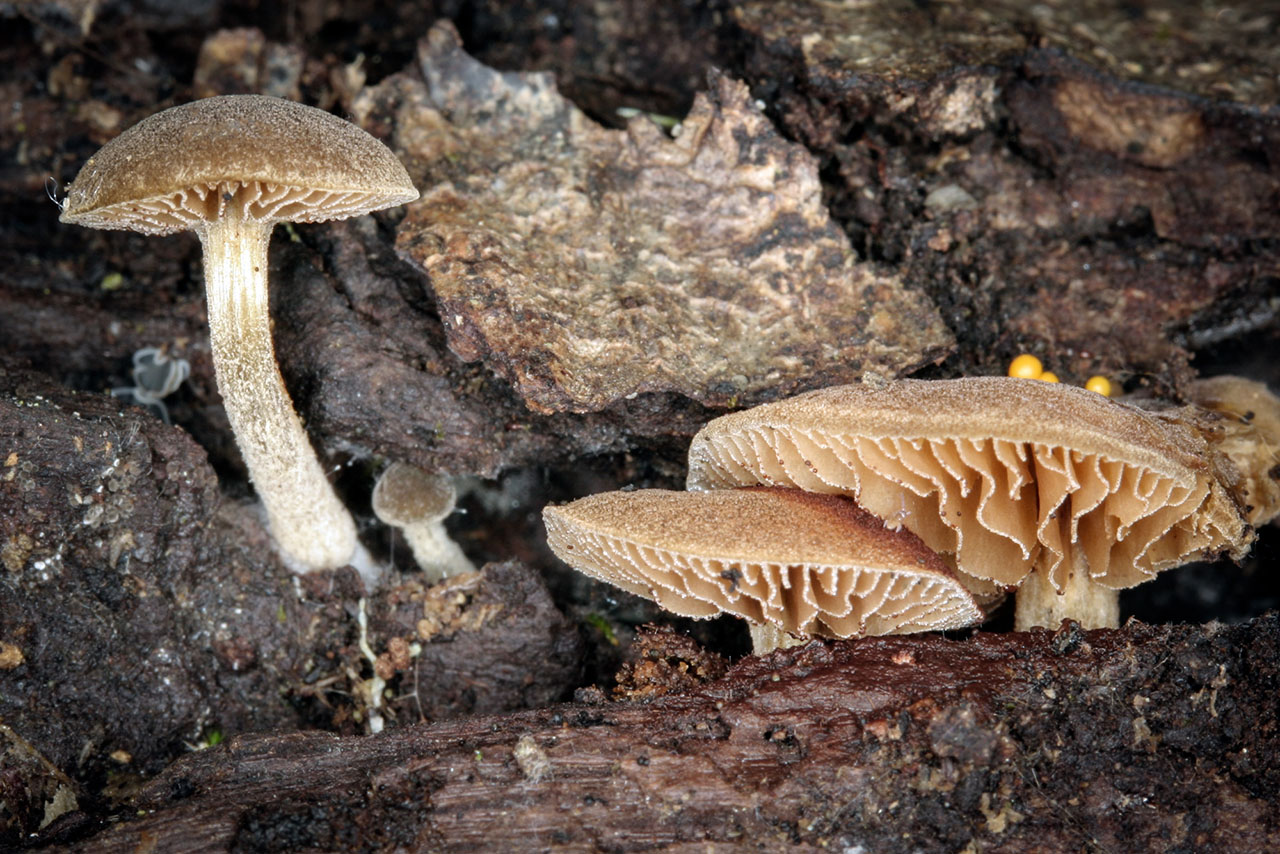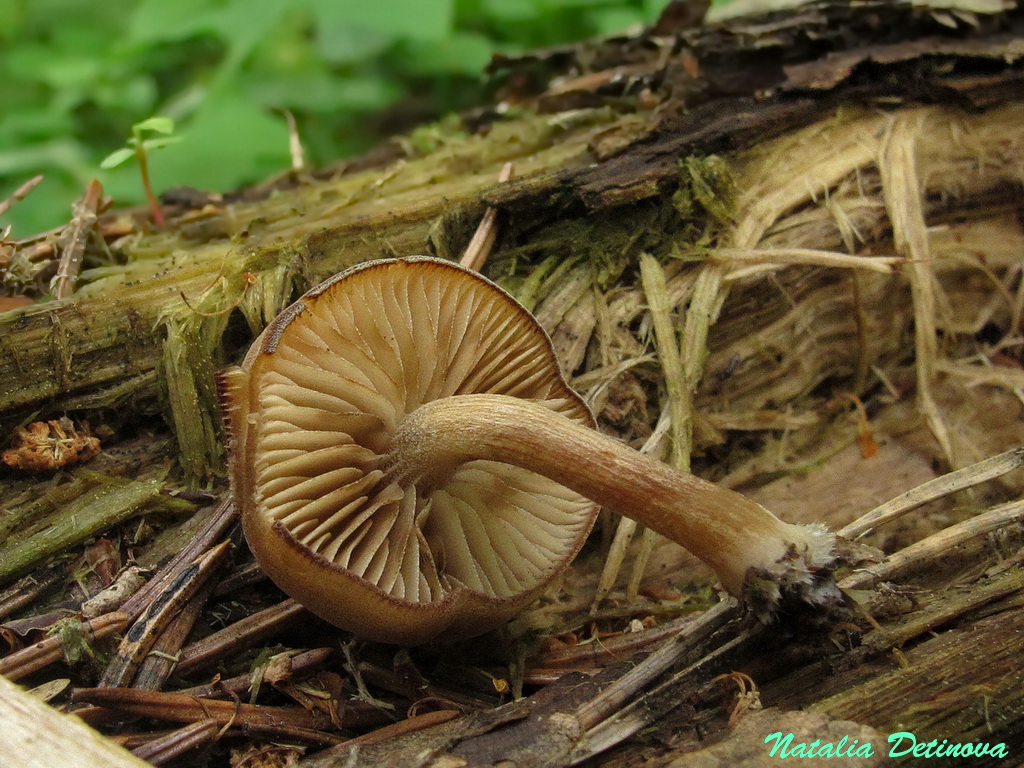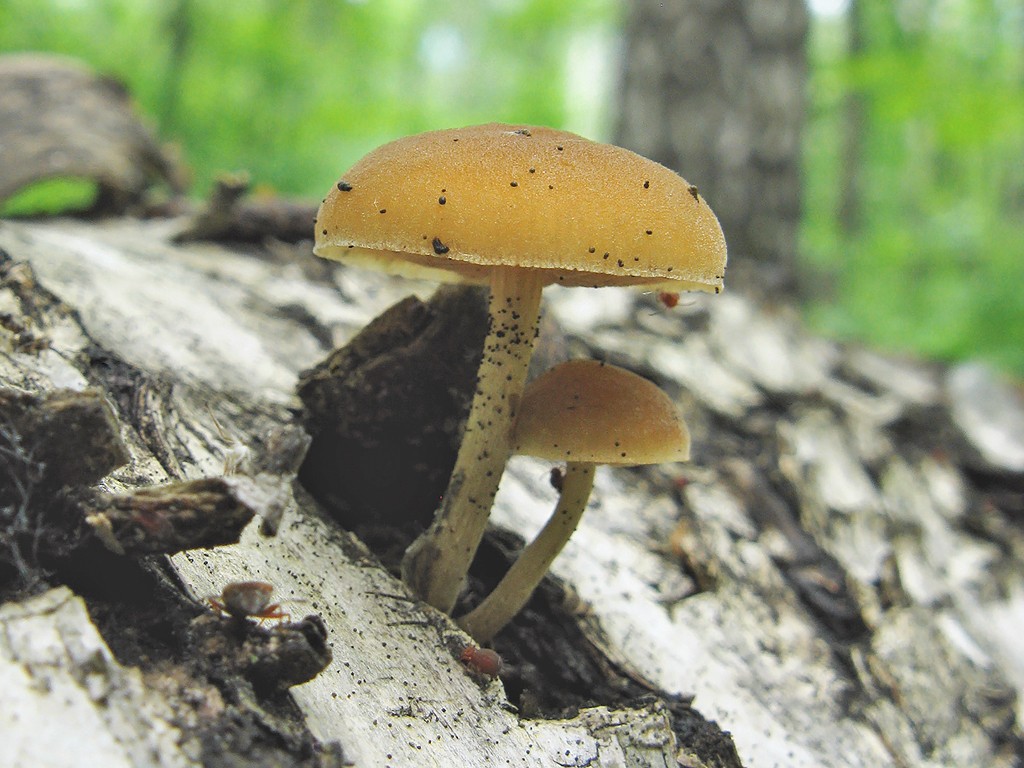Simocybe patchwork

Patchwork simocybe (Simocybe centunculus)
Hat: the cap is small, only 2.5 cm. In a young mushroom, the cap has the shape of a hemisphere with strongly curled edges. As the mushroom matures, the cap opens and becomes slightly convex, sometimes it takes a prostrate shape, but not often. The color of the cap surface varies from olive-brown to off-gray. In young mushrooms, the cap is colored more evenly, but with age in the center, the cap differs in color intensity. At the edges, the cap is usually thin, with visible plates. The surface of the cap is dry.
Flesh: thin flesh with a slight, indefinable odor.
Plates: not frequent, narrow, adherent to the peduncle, intermittent. In young mushrooms, the teeth of the plates are white, combined with a darker base, which creates a contrasting effect. In mature mushrooms, the plates are colored more evenly, mainly in a gray-brown color.
Spore powder: clayey, brown.
Leg: crooked leg, up to four centimeters high, 0.5 centimeters thick. The surface of the leg is smooth, in young mushrooms the leg is slightly pubescent. There are no scraps of a private bedspread on the leg.
Distribution: Fruiting Simocybe Patchwork on the remains of well-rotted trees, most likely the fungus bears fruit throughout the mushroom season.
Similarity: This mushroom can easily be mistaken for almost any superficially similar small brown mushroom growing on rotting wood. Especially all sorts of small Psatirells are similar to Simocybe. At the same time, the characteristic color of the spore powder and unusual plates, if they do not accurately indicate Simocybe centunculus, then definitely allow one to suspect that the fungus belongs to this little-known, but widespread species. The main feature of the fungus is the increased contrast of the plates. Of course, this does not guarantee that we are in front of exactly Samocybe Patchwork, but this does not mean that we are definitely not in front of an ordinary Psatirella.
Edibility: Nothing is known about the edibility of the mushroom, but it is not recommended to try it all the same.
Notes: Of course, any small brown mushroom should not be classified as a Simocybe based solely on the color of the spores and the characteristic contrast of the plates. But, nevertheless, these signs almost completely indicate that it is Simocybe Patchwork that is in front of you.
Where does the double-netting mushroom grow: description, useful properties and application
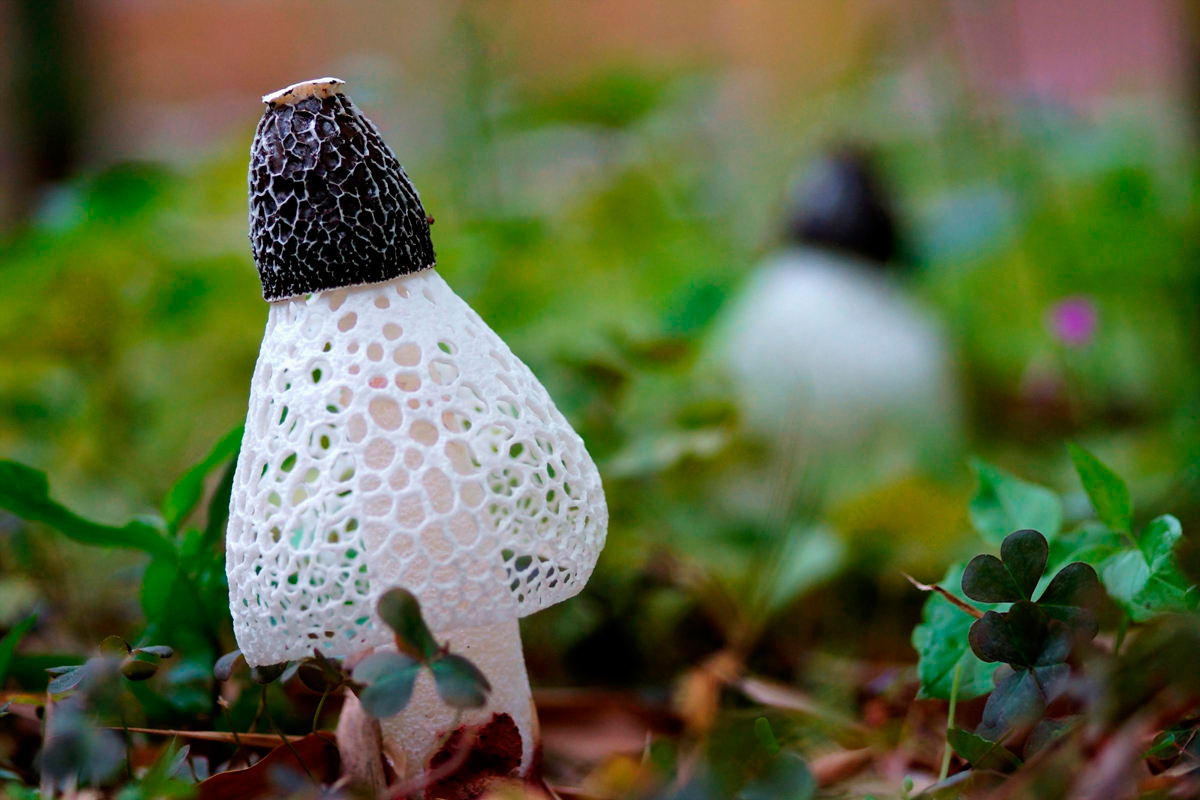
As for the sharp putrid odor, it is no coincidence that the nets start to emit it - thus it attracts flies and other small insects. It is noteworthy that the cap of adult fruits is covered with mucus, although a similar gluten is observed in mushroom spores, which resemble externally small egg clutches.

The structure and features of the species
The structure of the fungus directly depends on its age. For example, a young fruiting body is a kind of ball with an average diameter of 5 centimeters. As they grow older, the formation of a fungus occurs, which gradually changes the color of its shell, starting from a yellowish-white and ending with a light brown tint.
A cavity is formed inside the leg, while the flesh of a young netnose is soft without a pronounced taste and smell. Over time, the structure of the fungus invariably changes, as a result of which it becomes denser and more porous. As for the sharp putrid odor, it is not by chance that the nets start to exude it, because in this way it attracts flies and other small insects.
Where it grows, in what forests and how to collect
Unfortunately, the netkonoska is a rather rare forest inhabitant, which is why this species was included in the Red Book. It is most likely to be found in the mixed forests of Belarus, Kazakhstan, the Baltic states, Central Asia and Ukraine, as well as in such regions of the Russian Federation as Belgorod, Tomsk and Moscow.You can see representatives of this family in Transbaikalia, as well as in the Primorsky and Krasnoyarsk Territories.
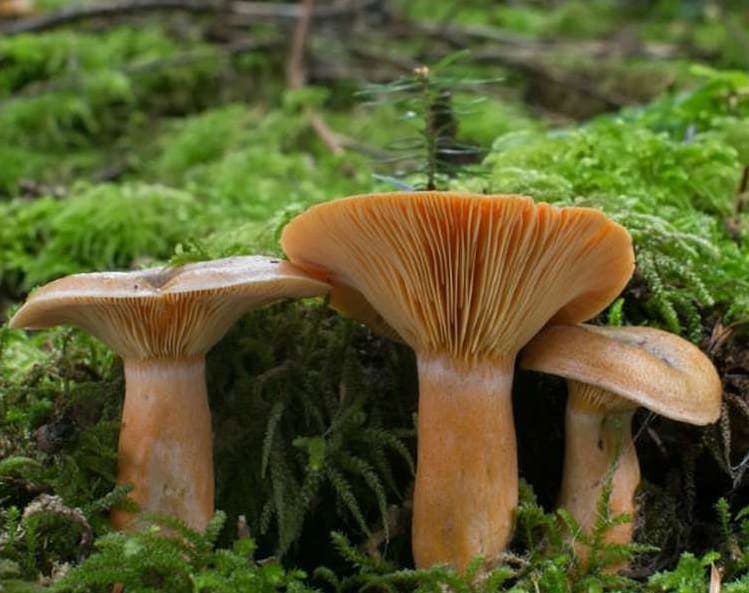
Popular varieties of mushroom
Today, scientists distinguish several varieties of netnose, first discovering this species back in 1562 in the Netherlands forests. Despite this, the first scientific description of the fungus dates back only to 1972, when the Italian biologist Micheli described the genus, calling it Phallus, and divided it into two separate subspecies. A little later, this list was expanded, although the most popular are the common and Adrian's.
Veselka ordinary
Like other representatives of the genus, the most common variety, Veselka vulgaris, is a conditionally edible mushroom that has been widely used in medicine. A peculiarity of its structure is very interesting: at the initial stage of development, one can observe a spherical body cracking over time and releasing a long porous barrel with a double cone-shaped cap.

Edibility, useful properties and restrictions on use
The stench of the mushroom does not allow it to rise above the 4th category in consumer and taste qualities, although at a young age it is quite edible. As for the cooking options, usually young fruits are cleaned of debris, mucus and a thin upper shell, eaten raw with sour cream, or added to salads and soups. You do not need to remove thin flakes for frying.
Application in medicine
The main value of the mushroom lies in its medicinal properties, so it is not surprising that it is actively used in traditional medicine. So, the use of a double mesh is indicated for such common ailments as rheumatism, gout and impotence, although in combination with other healing cultures, it helps to treat other pathologies.
Evaluation of the edibility of simocybe patchwork
There is no information about the edibility of this species, but it is not recommended to try it.
Related species
There are about a hundred species in the genus Simocybe. Basically, all these species have small fruiting bodies. Shimocybe destroys forest floor and decaying wood. Many of the representatives of the genus are characterized by crepit-like fruiting bodies with poorly developed legs. Most species of this genus are difficult to identify without special analyzes.

The most common members of the genus, in addition to scrappy simocybe, are raspberry simocybe, reduced simocybe and clumpy simocybe or brown-olive.

